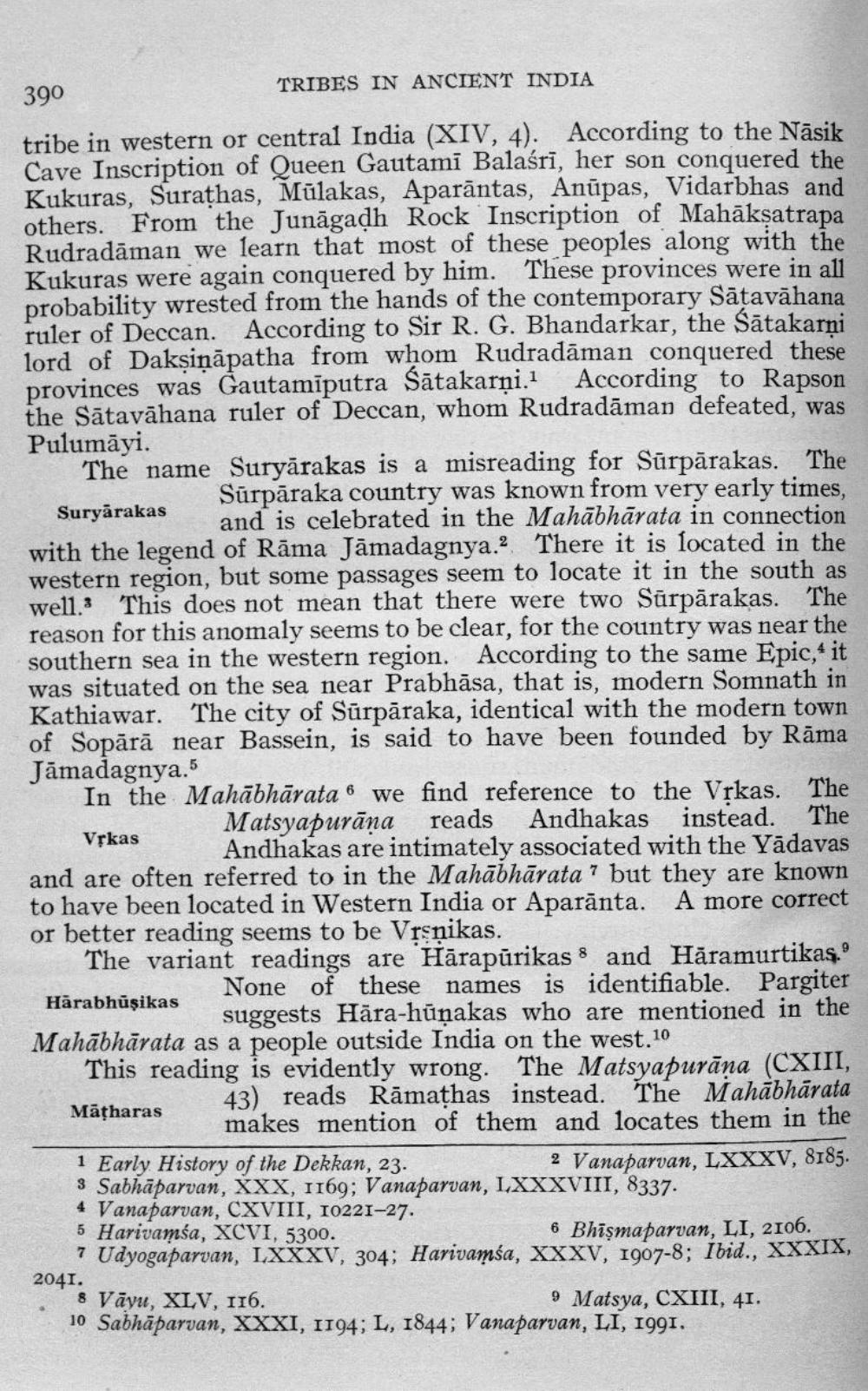________________
390
TRIBES IN ANCIENT INDIA tribe in western or central India (XIV, 4). According to the Nāsik Cave Inscription of Queen Gautami Balasri, her son conquered the Kukuras, Surathas, Mūlakas, Aparāntas, Anūpas, Vidarbhas and others. From the Junāgadh Rock Inscription of Mahāksatrapa Rudradāman we learn that most of these peoples along with the Kukuras were again conquered by him. These provinces were in all probability wrested from the hands of the contemporary Sātavāhana ruler of Deccan. According to Sir R. G. Bhandarkar, the Sātakarni lord of Daksiņāpatha from whom Rudradāman conquered these provinces was Gautamīputra Sātakarņi. According to Rapson the Sātavāhana ruler of Deccan, whom Rudradāman defeated, was Pulumāyi. The name Suryārakas is a misreading for Sūrpārakas. The
Sürpāraka country was known from very early times, Suryarakas
S and is celebrated in the Mahābhārata in connection with the legend of Rāma Jāmadagnya.2. There it is located in the western region, but some passages seem to locate it in the south as well. This does not mean that there were two Sūrpārakas. The reason for this anomaly seems to be clear, for the country was near the southern sea in the western region. According to the same Epic, it was situated on the sea near Prabhāsa, that is, modern Somnath in Kathiawar. The city of Sūrpāraka, identical with the modern town of Sopārā near Bassein, is said to have been founded by Rāma Jāmadagnya.5 In the Mahābhārata 6 we find reference to the Vrkas. The
Matsyapurāna reads Andhakas instead. The Vikas Andhakas are intimately associated with the Yādavas and are often referred to in the Mahābhārata? but they are known to have been located in Western India or Aparānta. A more correct or better reading seems to be Vrsņikas. The variant readings are Hārapūrikas 8 and Hāramurtikas.
None of these names is identifiable. Pargiter Härabhūşikas
suggests Hāra-hūņakas who are mentioned in the Mahābhārata as a people outside India on the west 10
This reading is evidently wrong. The Matsyapurāna (CXIII, Mātharas
43) reads Rāmathas instead. The Mahābhārata • makes mention of them and locates them in the 1 Early History of the Dekkan, 23.
2 Vanaparvan, LXXXV, 8185. 3 Sabhāparvan, XXX, 1169; Vana parvan, LXXXVIII, 8337. 4 Vana parvan, CXVIII, 10221-27. 5 Harivamśa, XCVI, 5300.
6 Bhīşmaparvan, LI, 2106. 7 Udyogaparvan, LXXXV, 304; Harivamsa, XXXV, 1907-8; Ibid., XXXIX, 2041. 8 Vāyu, XLV, 116.
9 Matsya, CXIII, 41. 10 Sabhāparvan, XXXI, 1194; L, 1844; Vanaparvan, LI, 1991.




